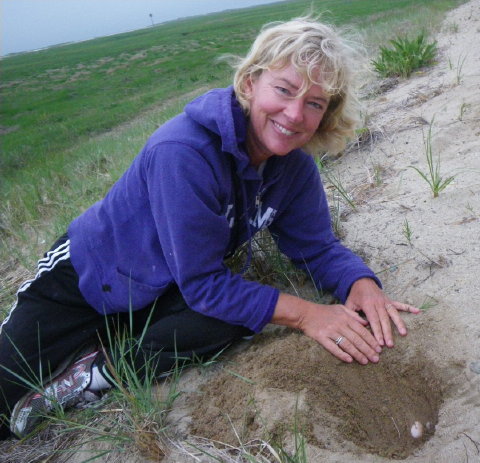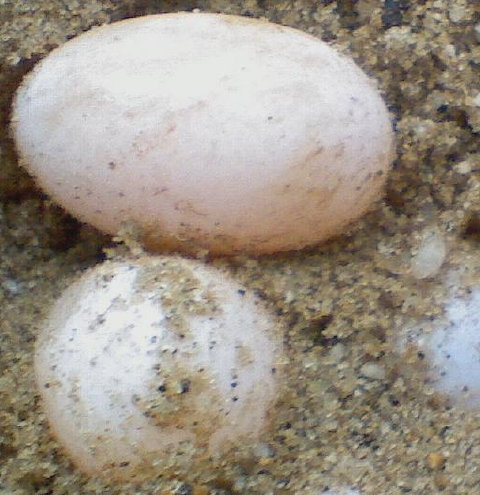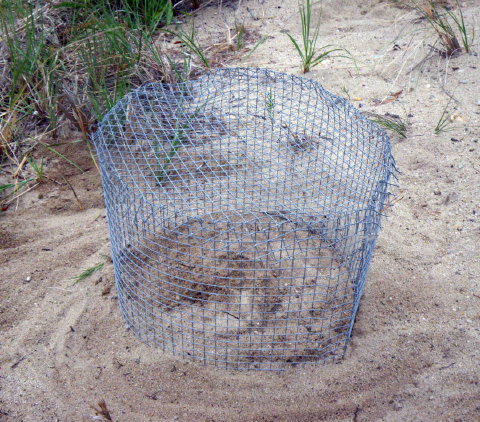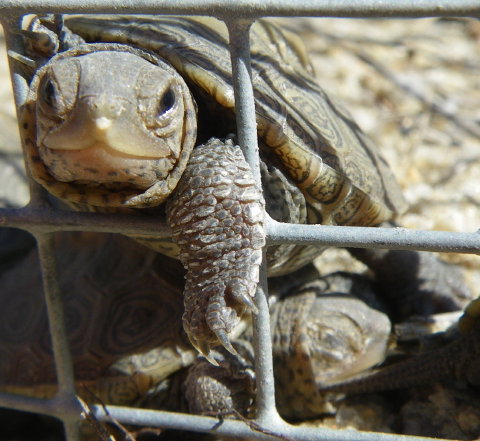Sue Wieber Nourse Discovers Fresh Terrapin Nest
Rumbles of thunder applauded Turtle Journal’s arrival on Lieutenant Island this morning. Thick, rain ladened clouds scraped across the tree tops with a flash of lightning seemingly sparked by each touch. Wellfleet Bay, which just yesterday appeared looking-glass smooth, broiled in white caps as receding tide clashed with southwesterly storm winds. Luckily, the rain held back as we scoured Turtle Point for evidence that nesting females had emerged on the morning high tide preceding the thunderstorms.
Pink, Beautiful Freshly Laid Diamondback Terrapin Eggs
One daring female had crawled ashore from Fresh Brook Run, crossed a tenth of a mile expanse of thick salt marsh grasses, and crisscrossed the high dune at Turtle Point until she found her perfect spot to deposit the next generation of diamondback terrapins. The sand showed three disturbed areas where she might have buried her clutch. Don took one and Sue chose a second; the third would wait the results of the first two digs. Sue Wieber Nourse picked wisely as her fingers probed the “sweet spot” where the female turtle had dropped her shaft into the wider egg chanber.
Turtle Journal Protects Threated Terrapin on Turtle Point
Sue excavated the nest and determined from color, texture and moisture of the eggs that they had been freshly laid this morning. We assessed that the nest was perfectly situated to receive plenty of high quality sunshine with little risk of depredation by dune grass roots. Sue carefully reburied the eggs, smoothed the sand and installed a cage over the nest.
Predator Excluder Cage Protect Terrapin Eggs
The predator excluder cage, held down by large metal staples, keeps most threats at bay. We received an extra boost from the weather because as soon as the cage had been embedded in the dune, the skies opened and a deluge fell. A heavy rain often erases the scent of eggs that attracts predators like a dude ranch dinner bell. Nests in this isolated location suffer a very high depredation rate, often greater than 90%. Part of the reason for this high loss is compression of nesting into compact sites because of human recreational development on the island. As nesting density increases, predators see Turtle Point as a smorgasbord to feed themselves and their spring-born offspring.
Protected 2009 Island Hatchling Eager for Release
To compensate for this pressure, Turtle Journal in partnership with Mass Audubon has protected terrapin nests on the island each year for the last decade to offset this unnaturally high predation rate. Residents of Lieutenant Island continue to be the biggest supporters of the terrapin rescue and conservation program, and a large part of its success can be directly attributed to their enthusiastic support and pro-active efforts to protect “their turtles.”



